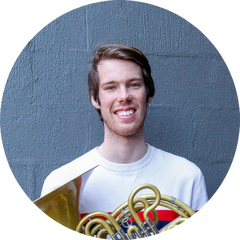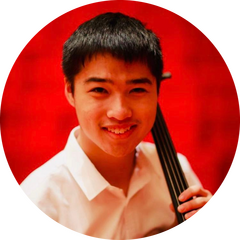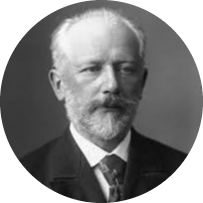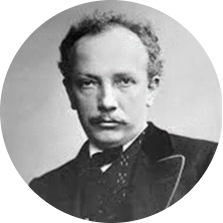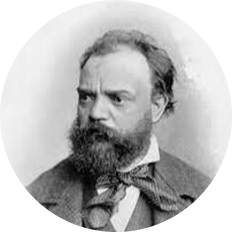MUBSO PRESENTS
VIRTUOSO
PROGRAMTchaikovsky | Romeo and Juliet Fantasy OvertureStrauss | Horn Concerto No. 1- Interval -Dvorak | Cello Concerto

ABOUT MUBSO
The Melbourne University Biomedicine Students' Orchestra, also known as MUBSO, is a symphony orchestra that brings together students from all faculties of the university who share a passion for classical music, orchestra and charity. Founded in 2016, MUBSO is an UMSU affiliated club at the University of Melbourne that offers a rewarding outlet for students to foster their creative talents and serve the community. Since its founding, MUBSO has delivered eight major concerts: Into the Baltic (2017), A Midsemester Night's Dream (2017), Madam Amour (2018), Dreamcatcher (2018), Shine (2019), Voyager (2019), Awakening (2021), and Pastorale (2022).Besides major biannual concerts, MUBSO also has a strong medical focus through health-related community concerts, which have included various charity performances over the years at the Royal Melbourne Hospital, Federation Square, and retirement communities. This year, the establishment of the Chamber Music program has allowed members to form their own groups to play music in, with a chance to showcase their efforts in a Soirée performance earlier this semester. Through our musical and social activities throughout the semesters, MUBSO has been able to connect many students with a mutual love of music.Today, MUBSO has grown into more than just an orchestra, but also a close-knit family that thrives on the diversity of its members with hearts for music and charity. Together, we hope to make a meaningful and positive difference in our community, as we endeavour to bring our music to audiences of all ages and backgrounds. For this concert, we are proud to be supporting the Noro Music Therapy (more information below), and concert proceeds will be donated towards their mission.---
MUBSO COMMITTEEPRESIDENT
Yuki GohVICE PRESIDENT
Tom LoSECRETARY
Zimo ZhuTREASURER
Jessica ChungPUBLICITY OFFICER
Chen LiEVENTS AND SPONSORSHIP OFFICER
Sophia DowlingLIBRARIAN
Tom AnCATERING MANAGER
Jasmine Ye
ABOUT NORO
Noro Music Therapy delivers life-transforming clinical music therapy and community music programs.Music therapy is used for a range of challenges including disabilities, developmental delays, behaviours, mental health, neurological impairments and dementia.Noro is at the forefront of music therapy, widely regarded as exemplars in their field, and innovators in how they operate. Every week, over 1,750 people (from small children to adults over 100 years old) rely on the evidence-based therapies Noro Registered Music Therapists use to achieve clinical goals, improve daily living and increase social and community participation.There is a growing need for the therapies Noro delivers. They continue to expand their short and long-term programs to provide quality outcomes and assist more clients. They are also increasing their footprint, with 5 clinics across the Sydney metro area, and more planned.---
MUSICIANS
# Indicates principalVIOLIN I
Celine Ng (Concertmaster)#
Nick Wang
Quentin Reusens
Matthew Koo
Chereen Ng
Stephanie Cho
Hong Sheng Quah
Nicky LauwVIOLIN II
Vincent Wong#
Carolynn Git
Evelyn Carapetis
Frederick Petersen
Ting-Wei Hsu
Wei-Tzu Wang
Ruotong Li
Junquan Yu
Chen LiVIOLA
Celeste Wong#
Tim Naylor
Keith Wong
Kameron Lai
Owen WuCELLO
Lincoln Poon#
Eric Wang
Selena Wiesel
Emily Woods
Haruka Yabashi
Taku Yoshigai
Wendy WangDOUBLE BASS
Tom Lo#
Wakana Suzuki
Zimo ZhuFLUTE
Bhadra Rajendren Pandalai#
Kieran Ng
Han Bi Zhao
Olivia Zhang
Chen Li (piccolo)OBOE
Annabel Lam#
Jemima StreaderCLARINET
Tom An#
Hamish Monckton
Samantha HuangBASSOON
April Ward#
Lola SchueleFRENCH HORN
Ciara Wrede#
Maddison McAlister
James Ben Gray
Sarah Savage
Oscar StocksTRUMPET
Felix Geake-Ransome#
Sophia Dowling#
James AgahiTROMBONE
Ken Tang#
Samantha HuangTENOR SAXOPHONE
Erick Wong
Ben DenmanTUBA
Alicia ParryTIMPANI
Tianli ZhangPERCUSSION
Jeremy Annal
Alice Jiao
Jasmine YeHARP
Jasmine Ye
CONDUCTOR
YUKI GOHYuki is an undergraduate student at the Melbourne Conservatorium of Music majoring in Composition. He has been the student conductor of the Melbourne University Biomedicine Students’ Orchestra (MUBSO) as of 2021 and is also the current Assistant Conductor of the Heidelberg Symphony Orchestra.He commenced his studies in orchestral conducting in 2019 under the tutelage of John Ferguson. That same year, he made his debut at a combined schools orchestra charity concert, a concert organised by students which raised over $4000 for the Skyline Foundation. He has been involved in conducting engagements with other student orchestras ever since. His other mentors include Nicholas Bochner and Christopher Kopke.As a composition student at the Melbourne Conservatorium of Music, Yuki has studied under the tutelage of Timothy Dargaville and Christine McCombe. Notable premieres of his works this past year include that of his orchestral piece After Rain Comes the Rainbow, performed by the Melbourne University Biomedicine Students’ Orchestra, and his percussion piece Time Stop, performed by the Melbourne Conservatorium of Music Percussion Ensemble. He has also had the privilege of workshopping and recording his mixed sextet Where the Quiet Things Are with the Syzygy Ensemble.---
SOLOISTS
COREY EAST-BRYANSCorey East-Bryans commenced his studies of French Horn at the age of 10, and is currently undertaking a Bachelor of Music Performance at the Melbourne Conservatorium of Music.Corey is grateful to have been the recipient of numerous scholarships and awards throughout his degree to date.At this institution, Corey has the immense privilege in studying both French and Natural Horn under the tutelage of Carla Blackwood, Nicolas Fleury, and Mark Papworth respectively, whose guidance and friendship continue to inspire him.Corey is honoured to have performed in classes for various international artists, including Andrew Bain, Stefan Dohr and Casey Rippon. He has also taken private lessons from notable Australian horn pedagogues including Ben Jacks and Peter Luff.Within the Conservatorium’s ensemble program, Corey performs with the Philharmonic and Symphony Orchestras, as well as the Senior Wind Symphony. He also actively performs chamber music within the institution.Corey is also an active freelance musician, working particularly within Melbourne Opera, and is looking forward to performing 'Der Ring des Nibelungen' in 2023.Other recent performing highlights have included involvement in Australian Youth Orchestra programs, performing Mahler's Symphony No. 2 'Resurrection' with the University of Melbourne Symphony Orchestra, and performing Pines of Rome with Melbourne Symphony Orchestra, as part of a side by side program.---
LINCOLN POONLincoln has been playing the cello since he was 5. He passed ABRSM Grade 8 Theory in 2015 when he was just 13 years old. He also attained Licentiate diploma (LTCL) with distinction back in 2018. He has a strong passion for music.Lincoln was principal cellist for the Melbourne Youth Orchestra Summer Concert and Scotch College Symphony Orchestra in 2019, and have played together with other famous musicians such as TwoSetViolin. He has taken part in many orchestras and ensembles in Melbourne and in Hong Kong as well, before he came here in 2018.Lincoln was also a member of the University of Melbourne Philharmonic Orchestra of the Conservatory of Music in 2021, as well as the Gondoliers opera from the Gilbert & O’Sullivan Opera Victoria in February this year. Now he’s a principal cellist at MUBSO and a regular cellist at his church.He made his concerto solo debut in mid-2019, also with this concerto, and he‘s performed during a tour across the United States during his time in Scotch College as well.
PROGRAM NOTES
PYOTR ILYICH TCHAIKOVSKY(1840 – 1893)Romeo and Juliet Fantasy OvertureThe plays of William Shakespeare (1564 – 1616) have served as sources of inspiration for countless composers throughout the Romantic Era, from Berlioz to Verdi, and many others. Tchaikovsky initially received the idea of adopting the tragedy of the two star-crossed lovers and setting it to music from Russian composer Mily Balakirev, the leader of five 19th-century Russian composers (known as ‘The Mighty Handful’) who sought to develop a distinct national style of Russian classical music.The Overture today is widely regarded as one of Tchaikovsky’s quintessential masterpieces. However, the premiere of the work in 1870 was not well-received, and it took the composer ten further years to make extensive technical and conceptual alterations to the work, which culminated in his third and final version of the piece – the one which audiences know and love today.Written in sonata form and bracketed by a slow introduction and coda, the piece does not follow a strict retelling of events in the tragedy, but rather captures the drama and tension by focusing on three of the narrative’s main traits – Friar Lawrence’s piety, the conflict between the Montagues and the Capulets, and the romance between Romeo and Juliet – each of which are given a distinct musical identity within the framework of the piece.The piece opens with a lugubrious chorale of low clarinets and bassoons, a solemn evocation of Friar Lawrence and his devotion to the Church. After a foreboding introduction, the first subject which represents the feud between the warring families is introduced. The heat of the conflict is illustrated by offbeat entries, imitation between winds and strings as well as running semiquavers. The battle subsides gradually to make room for the second subject – the famous love theme – played first by mellow cor anglais and violas before being taken over by the high woodwinds. The two lovers share a profound moment of intimacy, evoked by hushed strings and angelic harp chords, before the battle rekindles with renewed ferocity and tension in the development section. The second subject love theme, likewise, explodes with a revived passion and intensity in the recapitulation, a passage which showcases one of Tchaikovsky’s signature orchestration techniques – lush strings in unison layered by throbbing horns.A fateful timpani note marks the tragic death of the lovers, which leads into a lamenting coda. A reposeful wind chorale and an expansive reiteration of the love theme lead the music towards a peaceful final cadence, before dramatic orchestral hammer-stroke chords seal the lovers’ fate and mark the end of the music and tragedy.
RICHARD STRAUSS(1864 – 1949)Horn Concerto No. 1 in E-flat Major, Op. 11Written in 1883, the first horn concerto was an early work of Strauss, and whilst it is largely ingrained in late-Classical tradition as opposed to the sweeping style of late Romanticism characteristic of his most famous works, it can undoubtedly be perceived as a precursor to many of the great ‘horn calls’ in his epic tone poems Don Juan and Till Eulenspiegel, to name a few, which were written in his mature style.That is not to say that his first horn concerto is not a work of masterful craftsmanship. Being one of the most widely performed horn concertos despite its rather short sixteen-minute length, the concerto features themes which are distinctive and captivating, exploits the musicality of the horn as an instrument capable of playing arresting fanfare-like passages to lyrical melodic lines of beauty and dignity. Examples of the above feature transparently and impressively throughout the work, composed in three distinct sections (or ‘movements’) bound together ingeniously through thematic and motivic unity within and between each section.Strauss wastes no time in introducing the soloist at the beginning of the piece. After a proclamatory orchestral tonic chord, the horn enters brilliantly with a bold, fanfare-like flourish before the orchestral exposition of the movement’s main theme. The concerto slinks into its slow, haunting second movement which features a sustained melodic line in the solo horn accompanied by a hushed rising arpeggio motif in the strings. A contrasting middle section in which the soloist plays a fortissimo variation of the lyrical melody in the first movement above vigourous string pizzicato and rapidly-tongued woodwind repeated notes (imitative of a guitar) then takes the stage. The third movement is a buoyant and joyous rondo in compound time featuring a rhythmically-altered version of the first movement’s main theme. The haunting second movement theme makes one final appearance towards the end before the concerto races towards its conclusion with a soloistic display of virtuosity and bravado.
ANTONÍN DVOŘÀK(1841 – 1904)Cello Concerto in B Minor, Op. 104“Why on Earth didn’t I know that one could write a cello concerto like this? Had I known, I would have written one long ago.” (Johannes Brahms on Dvořák’s Cello Concerto)Brahms had every reason to be impressed by Dvořák’s groundbreaking cello concerto. It is a tour de force of rich invention, boasts a wealth of melodic material, succeeds in the insuperable task of balancing a solo cello against a symphony orchestra and remains completely individual and unique amongst other romantic concertos.The Cello Concerto in B Minor was written towards the end of Dvořák’s residence in the United States, and whilst part of the tension within the work derives from his homesickness, another part comes from having heard the news that his sister-in-law, Josefina Cermakova, was terminally ill while he was composing the work. He hence felt the inclination to refer to his lied ‘Lasst mich allein’ (‘Leave Me Alone’), a favourite of Josefina’s, in the second movement of the concerto. Following Josefina’s untimely death in 1895, Dvořák revised the ending to include an elegiac coda as a heartfelt tribute to her.The first movement opens with a shadowy statement of the first subject, a march-like theme strong and assertive in rhythm, in the clarinets and bassoons, before an expectant crescendo leads to a powerful, full-bodied orchestral statement of this main theme. The second subject remains one of Dvořák’s most beautiful melodies, first given to solo horn accompanied by sustained strings. After the lengthy orchestral exposition, the solo cello finally steals the spotlight with grandeur – a virtuosic restatement of the first subject in the tonic major, embellished with triple-stops. The development begins rhapsodically before arriving at its most intimate and wistful moment – a melancholic duet between the cello and solo flute (evoking a nightingale) above hushed tremolo in the strings. A transition passage brings the movement to a triumphant second subject recapitulation, before the movement ends with resplendent festivity and victory.A placid main theme played by solo clarinet opens the second movement. The atmosphere is largely calm and serene, though at times tainted with anguish and tension. A sudden G minor orchestral explosion leads to a moving lyrical middle section in which Dvořák refers to his lied ‘Lasst mich allein’ in honour of his sister-in-law Josefina. The main theme is then reprised by a horn chorale accompanied by lower strings, followed by a cadenza-like restatement of the theme in the solo cello. The movement ends in a state of serenity and bittersweetness.The opening of the finale, with a quaver ostinato in the lower strings below hints of the main theme played by winds and horns, bears resemblance to a marching band coming from a distance. This main theme, first introduced in full by solo cello, is a vigourous march which recurs several times throughout the rondo-form movement. New themes of varying character appear in the movement, the last of which is yet another melodious theme sung first by the cello before it is passed on to solo violin in a highly emotional and thrilling passage. The momentum recedes in the elegiac coda which serves as a poignant farewell to Josefina. Here, Dvořák nostalgically restates fragments of the first movement’s main theme as well as quotes his lied once more in the solo violin. Fortunately, he manages to transform this plaintive mood into one final triumphant orchestral tutti, with its dance-like momentum reminiscent of his Slavonic Dances, and the concerto concludes on an exultant note.We hope you enjoy the concert!






